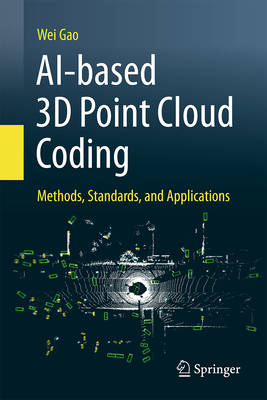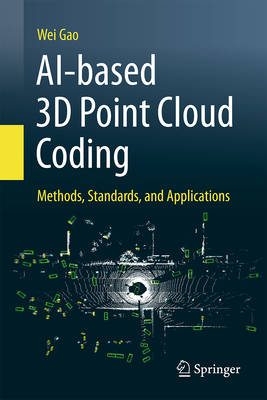
- Afhalen na 1 uur in een winkel met voorraad
- Gratis thuislevering in België vanaf € 30
- Ruim aanbod met 7 miljoen producten
- Afhalen na 1 uur in een winkel met voorraad
- Gratis thuislevering in België vanaf € 30
- Ruim aanbod met 7 miljoen producten
Zoeken
€ 274,95
+ 549 punten
Omschrijving
As 3D vision reshapes industries from augmented reality to autonomous systems, a critical challenge emerges: How can we efficiently process massive point cloud data without sacrificing quality? This book delivers the answer by unveiling the first unified framework that integrates AI-based coding algorithms, international standards (MPEG/JPEG/AVS), and real-world implementations--a breakthrough absent in existing literature. This book is a must-read for researchers, practitioners, and students who are interested in the interdisciplinary fields of artificial intelligence, data compression, immersive media, and 3D vision applications. Featuring detailed discussions on both static and dynamic point cloud coding, the book systematically unpacks innovative methods, international standards, and open-source solutions. It addresses quality assessment, perception modeling, and artifact removal techniques--areas that pose significant challenges yet hold transformative potential for 3D data processing. By presenting comparative analyses of prominent standards, such as the deep learning-based point cloud coding standards from MPEG, JPEG, and AVS, alongside emerging AI-enhanced coding frameworks, the book equips professionals with the insights necessary to navigate and shape the future of multimedia communication and 3D vision technologies. With its clear, segmented structure and targeted content, this book not only addresses current academic debates but also paves the way for future research and industrial applications. Readers are guided through a rich array of topics--from deep neural network fundamentals to lightweight implementations and rendering systems--ensuring they gain a robust, practical understanding of AI-based point cloud coding. Whether you are looking to advance your research, enhance your technical skills, or simply explore the forefront of 3D vision innovation, this book offers the critical tools and perspectives needed to excel.
Alleen bij Standaard Boekhandel
+ 549 punten op je klantenkaart van Standaard Boekhandel
Beoordelingen
We publiceren alleen reviews die voldoen aan de voorwaarden voor reviews. Bekijk onze voorwaarden voor reviews.













